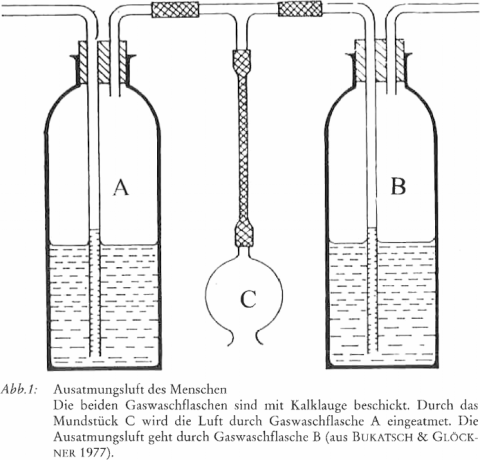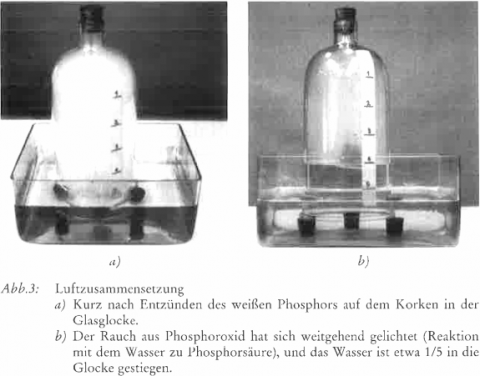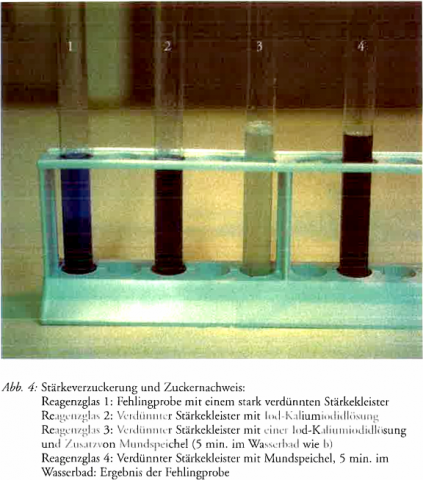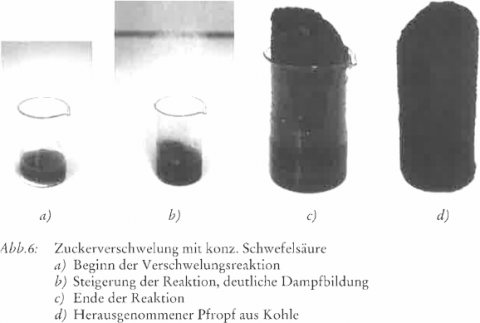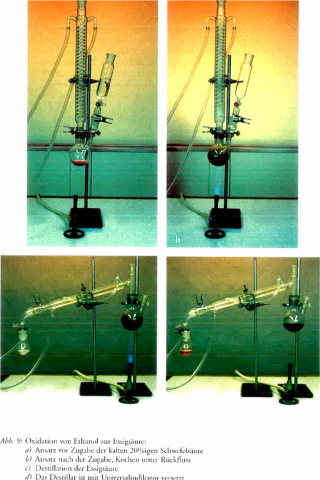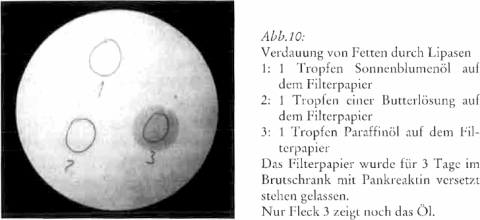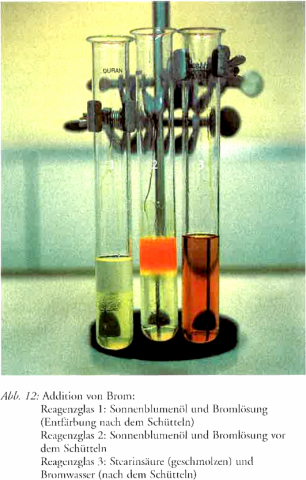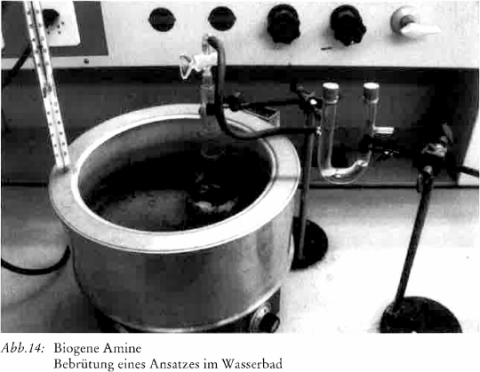Von der Umwandlungskraft der Luft
Zur Chemie-Epoche der 9. Klasse der Waldorfschule
Export Article Citation as
- Download price : €6
Abstract:
Transformation forces of the air
a contribution to the chemistry main lesson of the 9th class of Waldorf schools
We present a guide for the chemistry main lesson of the 9th class of Waldorf schools, especially taking into account the characteristics of animal and human catabolism (linking up With the overview of plant anabnlism in the 8th class and the overview of the 7th class mineral chemistry).
The first part of the main lesson is related to respiration and oxidation. The second part considcrs the breakdown of carbohydrates. Beginning with starch swectening by enzymes, we continue with the alcoholic fermentation and cxpcrimcnts concerning ethanol. We go on the relation of ethanol to diethylether and With the oxidation of ethanol to acetic acid, lactic acid and butyrie acid fermentation. Finally we compare aerobic and anaerobic earbohydrate breakdown in an overview.
The third part of the main lesson is related to fats and oils (fat decomposition by lipase) and the esterification reaction as a reversal of saponification. Considerations of alcohols and fatty acids lead to an overview comparing the breakdown pathways of carbohydrates and fats.
The fourth part of the main lesson is concerned to the decomposition of proteins by pepsin and acid. We demonstrate the release of amino acids and as an example of anaerobie protein decomposition the biogenic amines and discuss their significance in physiology and their role as drugs.
The fifth and last part of the main lesson deals with the geologieally historical dimension of all presented substances. Via ehareoal production, we describe petroleum and coal distillation and the formation of these substances. In an overview, ways become visible for relating this chemistry main lesson to soil and earth formation processes. The chemical processes may become a key for the pupils to understand man and world.
References
- ABENDROTH, W. (1978): Von der Atmung und der Veraschung. In: Der Heilmittelbegriff bei Rudolf Steiner. Verlag Freies Geistesleben, Stuttgart
- BÄUERLE, W. & al. (1987): Umwelt: Chemie, Baden-Württemberg. Klett-Verlag, Stuttgart
- BEYER, H. & WALTER, W. (1981): Lehrbuch der organischen Chemie. Hirzel Verlag, Stuttgart
- BUKATSCH, F. & GLÖCKNER, W. (1977): Experimentelle Schulchemie Bd. 1, 2, 7, 8, 9. Aulis-Verlag, Köln
- CAMPBELL, N. A. (1997): Biologie. Spektrum Akademischer Verlag, HeidelbergBerlin-Oxford
- EISENER, W. & al. (1986): Elemente: Chemie I. Klett Verlag, Stuttgart
- ESKIN, N. A. M., HENDERSON, H. M. & TOWNSEND, R. J. (1976): Biochemie der Lebensmittel. Hüthig-Verlag, Heidelberg
- FRISCH, K. (1995): Bemerkenswertes zum Kohlehydrat-Stoffwechsel der Leber. Tycho de Brahe-Jahrbuch 1995, S. 194-216. Niefern-Öschelbronn.
- FÜLGRAFF, G. (Hrsg.) (1989): Lebensmittel Toxikologie. Ulmer Verlag, Stuttgart
- GREEB, E. & al. (1986): Umwelt: Chemie. Klett Verlag, Stuttgart
- JULIUS, F. H. (1978): Grundlagen einer phänomenologischen Chemie - Stoffeswelt und Menschenbildung Bd I. Verlag Freies Geistesleben, Stuttgart
- KARLSON, P. (1980): Kurzes Lehrbuch der Biochemie. Thieme-Verlag, StuttgartNew York
- KOOB, O. (1990): Drogensprechstunde. Urachhaus-Verlag, Stuttgart
- KOPP, W. (1976): Erdbildung als Ausdruck eines Atemprozesses. In: Der Homöopathisierungsbegriff bei Rudolf Steiner. Verlag Freies Geistesleben, Stuttgart
- KUSCHINSKY, G. & LÜLLMANN, H. (1984): Kurzes Lehrbuch der Pharmakologie und Toxikologie. Thieme-Verlag, Stuttgart-New York
- LINDER (1989): Biologie. Schroedel Schulbuchverlag, Hannover
- MACKENSEN, M. von (1986): Vom Kohlenstoff zum Äther. Pädagogische Forschungsstelle Kassel (Hrsg.), Bildungswerk Beruf und Umwelt, Brabanter Str. 43, 34131 Kassel
- MORRISON, R. T. & BOYD, R. N. (1978): Lehrbuch der organischen Chemie. Verlag Chemie. Weinheim-New York
- RAAF, H. (1990): Chemie des Alltags A - Z. Ein Lexikon der praktischen Chemie. Herder Verlag, Freiburg-Basel-Wien
- SCHEFFLER, A. (1981): Die Metamorphose der Moore. Elemente der Naturwissenschaft 34 (1): 23-38
- SCHEFFLER, A. (1996): Von der Wandlungskraft des Feuers. Zum Chemieunterricht. Tycho de Brahe-Jahrbuch 1996, S. 373-410. Niefern-Öschelbronn
- STEINER, R. (1920): Konferenz vom 22.09.1920. In: Konferenzen mit den Lehrern der Freien Waldorfschule in Stuttgart (GA 300/1), S. 214-234. Dornach 1984
- VOGT, H. H. (1973): Eiweißstoffe und ihre biologische Bedeutung. Praxis-Schriftenreihe Biologie Bd. 6. Aulis-Verlag, Köln
- WOLFF, O. (1998): Grundlagen einer geisteswissenschaftlich erweiterten Biochemie. Verlag Freies Geistesleben, Stuttgart
- WUNDERLIN, U. (1999): Die Prozessualität der mineralischen Chemie, deren Ordnungsprinzipien und physiologische Bedeutung. Zur Chemie-Epoche der 10. Klasse der Waldorfschule. Tycho de Brahe-Jahrbuch 1999, S. 87-132. NiefernÖschelbronn
- WUNDERLIN, U. (2000): Von der Wirkungskraft des Lichtes. Zur Chemie-Epoche der 8. Klasse der Waldorfschule. Tychn de Brahe-Jahrbuch 2000, S. 222 366. Niefern-Öschelbronn


